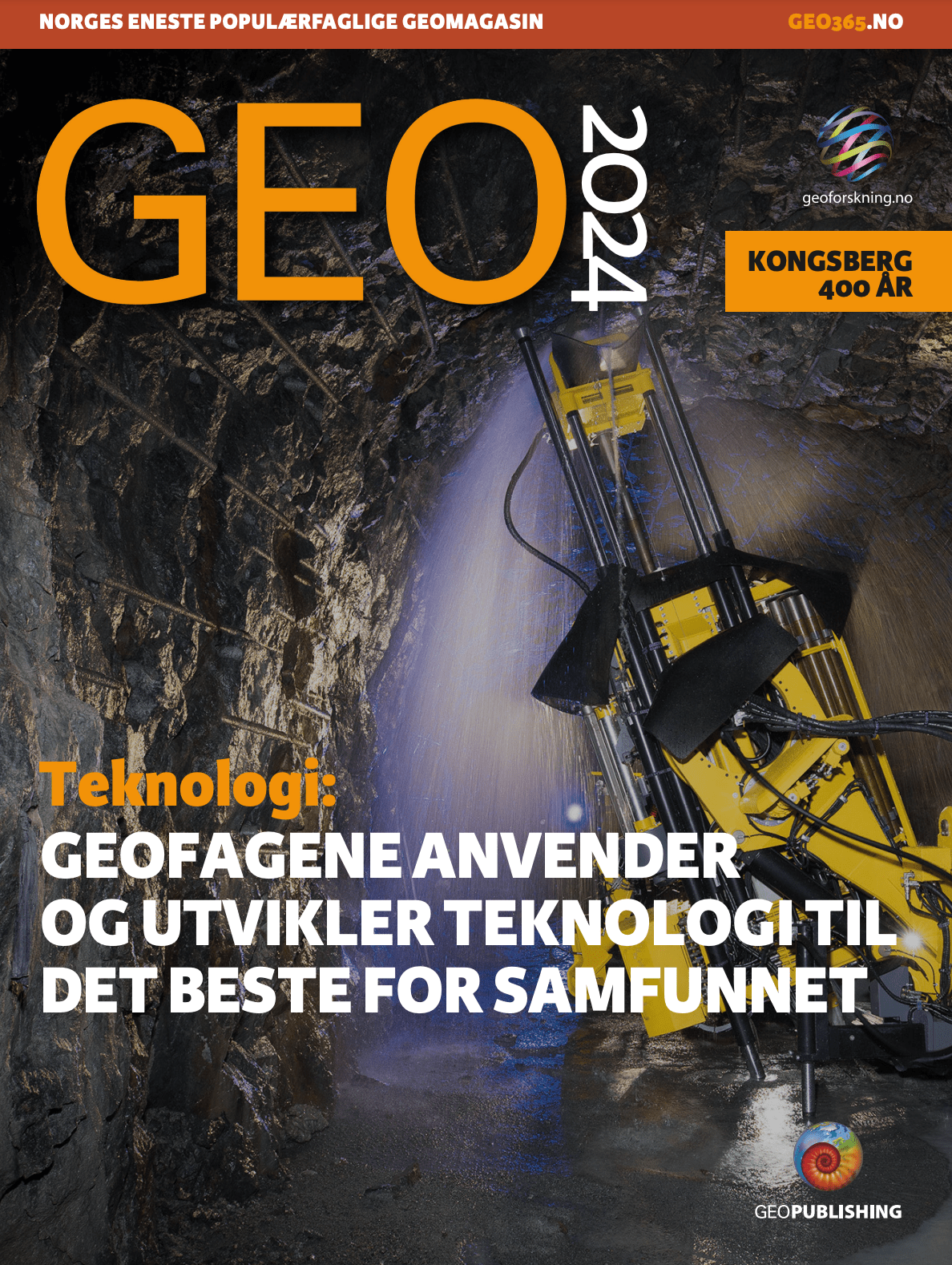This crust fragment was collected in the Atlantic Ocean west of Africa. Photo: Jan Steffen / GEOMAR
– Metallic crusts in the deep seas of the Arctic Ocean including the Norwegian economic zone are very enriched on scandium, making the deposits economically interesting, said James Hein, former geologist at the USGS during the conference NCS Exploration – Deep Sea Minerals in Bergen in October.
Metallic crusts form over millions of years on underwater mountains – seamounts. In Norwegian waters, crusts have been discovered along the mid-ocean ridges.
In recent years, the University of Bergen (UiB) and the Norwegian Petroleum Directorate have carried out several expeditions to map Norwegian deep-sea mineral deposits, which are metal-rich crusts and seafloor massive sulphides (SMS). The third deposit type, nodules, are not known in Norwegian waters.
The Norwegian deposits are interesting because they contain a number of the metals that the green shift and the electrification of the society require; copper, nickel, zinc, lithium, cobalt and rare earth metals.
Rolf Birger Pedersen, head of the Center for Deep Sea Research at UiB, said during the same conference that the crusts in the Norwegian Sea are rich in cobalt, a metal that is primarily used in the production of batteries.
Research carried out by Hein and others now further points out the Norwegian deep-sea deposits as treasure chests.
According to Hein, the average grade of scandium in crusts in the Arctic is 48 grams per ton (g/t), significantly higher than the content of crusts elsewhere in the world.
| Scandium
Scandium belongs to the group of rare earth metals and has a melting point of 1541 ° C and a density of 2.99 kg / dm3. Scandium is more common in the Sun and other stars than on Earth. Scandium is a light element and can be used together with aluminum to form lighter, and stronger aluminum products that are more corrosion resistant and heat tolerant. This makes scandium-aluminum alloys interesting for aerospace, space and military use. Scandium is also used for high intensity lighting (“stadium lighting”), high voltage power transmission and in 3D printing. Other uses include televisions and fuel cells. Scandium is found in many minerals, including bazzite, sterryite and davidite. It is an important part of thortveitite and is extracted from this mineral. In Norway, thortveitite from Iveland played a certain role in the early production of scandium for research purposes.
Sources: Norsk geologisk ordbok, scandiummining.com |
According to scrapmonster.com, the price of the rare earth metal is close to 300,000 US dollars per kilogram (for a purity of 99.99 percent, lower purities and scandium oxides are cheaper).
That is almost five times the price of gold.
– The crusts in the Amerasia Basin in the Arctic Ocean, which are the best studied crusts in the Arctic, show that they are atypical in several ways and reflect the unique conditions in and around the Arctic Ocean. The crusts in the Norwegian economic zone share these characteristics, Hein said.
Hein mentioned that the Arctic crusts have higher growth rates and higher iron content relative to manganese. Not least, the concentrations of scandium are higher.
– This is due to the fact that the crusts form in the layers in the ocean with a low content of oxygen – the so-called Oxygen Minimum Zone. In and around the Arctic Ocean, this zone is thinner and shallower, and the seawater contains more dissolved scandium.
Large deep-sea deposits globally
It is estimated that there may be 33,000 underwater mountains in the world’s oceans. But this is only an estimate. The oceans are far from fully mapped.
The crusts grow by about 1 – 5 millimeters per million years and consist mainly of silicates, iron and manganese oxides.
The chemical conditions must be optimal and are controlled by the shape of the underwater mountains and how they affect deep-sea currents, as well as the content of oxygen in the sea.
The largest deposits are probably found in the Pacific Ocean 3,000 kilometers southeast of Japan in an area called the Prime Crust Zone (PCZ).
PCZ probably holds 57 percent of the world’s underwater mountains, which can be up to 150 million years old. The resource estimates are 7.5 billion tonnes of ore that contain 4 times more cobalt and 9 times more tellurium than known resources on land.
Hein noted, given that deep-sea mining follows the evolution of offshore production of petroleum, we can expect about 30 – 40 per cent of the demand of critical metals to be sourced from deep-sea mines by about 2065.




